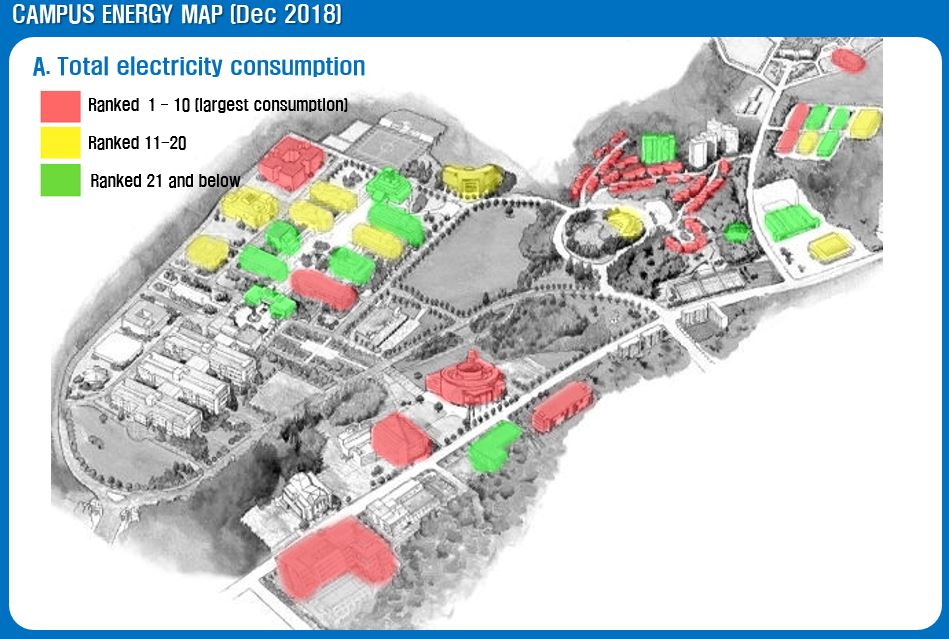
The most important energy policy of South Korea, which imports most of its energy is a stable supply of energy. However, the government is struggling with supplying stable energy as conditions of both internally and externally have become increasingly difficult, including deteriorating national acceptability of nuclear power plants, limits on the expansion of new renewable energy, and increased pressure to reduce greenhouse gas emissions under the new climate regime. Energy conservation and efficiency improvement are essential for smooth supply and enhanced national energy security. In particular, it is urgent to come up with measures to save energy in university buildings, one of the energy glutton buildings.
Nine out of 10 university students and faculty members in Korea believe that energy waste is serious in schools. As a result, experts point out that it is urgent to have a realization of energy saving in universities. Korea NGO’s Energy Network conducted the survey to find out the current state of energy consumption at a university, one of the most energy-intensive institutions, and the level of awareness among students and faculty about energy consumption, and to find effective ways to reduce energy consumption at universities. According to the research, nine out of the Korea NGO’s Energy Network’s branch of the country conducted a survey for five days during on energy use, and 175 places including administrative offices, classrooms, restaurants, libraries, and dormitories at nine universities across the country in Busan, Gwangju, Chuncheon, Ansan, Cheonan, Pohang, and Masan. During the survey, it was found that the indoor and outdoor temperature was around 25℃, the utilization rate of the air conditioning system 45.6%, and the setting temperature was 24℃. The overall average illuminance was 313.7lx, which is considered appropriate for the KS lighting standards. In particular, a university in Seoul has a problem of unnecessary power waste when the use rate us low managed as a central control system in the library. Lighting devices were found to be 79% fluorescent and 16% LED. The energy used by buildings in university was total 328.9 thousand TOE, accounting for about 13.9% of the total consumption of large buildings. The energy unit of university building was 125.7Mcal/m2, lower than the average of a large building (179.0Mcal/m2), but higher than of apartment (108.6Mcal/m2). Only two of the universities have introduced building energy management systems, and one university has installed and operated solar and geothermal power plant in some buildings.
POSTECH energy management committee has published monthly energy consumption report on announcements and aggregate usage of electricity and water supplies. According to the report, it shows that the amount of electricity used in last year exceeded the permissible amount allocated by the Ministry of Environment by 5,985,711kWh. It can also be seen that electricity consumption has increased by 1,378,709kWh over last year.
It is time to actively reflect energy related issues in school regulations, as well as direct publicity for energy conservation campaigns. For the sustainable future, university and its members should change the way they regard these issues.


